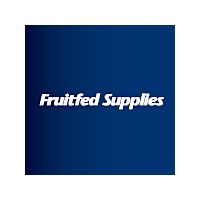
Challenges build resilience for Auckland kiwifruit orchard
Tina and Rex Reed, of Kiwigold Orchards Ltd in northwest Auckland, face the challenges of running a family-owned horticultural business with the level of resilience and tenacity common among growers up and down the country.
As they head into the 2023-24 growing season, they’re yet to see the possible impact of the major weather events that struck the Auckland region earlier this year.
“We’ve definitely lost some vines after the flooding,” Tina says about their 12.5 ha of Gold3 across two blocks in Taupaki and Kumeu. “And we won’t know until mid to late spring how the others have pulled through when we can see what fruit-set is like.”
Their sons, Luke and Liam, joined them in the family business in 2021 when bare land near Whangarei was purchased. Currently, 10 ha of this land is planted in red kiwifruit, with another 4.5 ha to be planted.
“Rex had just had hip surgery when the floods happened so the boys came down to help clear fallen trees and tidy up. That’s certainly one benefit of having our family all involved in the business.”
The story of family resilience dates back to when Tina and Rex purchased the Kumeu property from Rex’s father, Ken. Originally used for market gardening, the land was planted in Hayward kiwifruit in the 1980s.
“Then the industry collapsed not long after we took over,” Tina explains. “We grafted 1.6 ha to Gold 16A but that variety is frost tender and it budded a bit early for the conditions here, so there have always been challenges.”
The couple started grafting Gold3 in 2012, doing the work themselves as time and budget allowed. The regrafting was completed by 2021. “Looking back, it was a big job to do ourselves and took longer than we hoped due to the time and energy needed.”
Luke and Liam both went to university and worked in other careers before deciding they wanted to grow kiwifruit. The pressure of housing developments in northwest Auckland plus orchard ownership and management changes around them is part of the reason the family looked north for land to develop a new orchard.
“With housing, commercial and roading developments all around us, there’s not a lot of certainty for the future of kiwifruit growing around here,” explains Rex. “The new Costco is only 5 km away. We aren’t the only local growers to use helicopters for frost control and we make sure we follow Zespri guidelines regarding contacting our neighbours nearby prior to spraying. Despite following all the rules, there’s more pressure not to have horticultural operations near residential areas.”
Another change for the Reed’s business occurred when the Kumeu Fruitfed Supplies store was combined with the Helensville PGG Wrightson Rural Supplies store.
“We appreciate that Steve has been our rep for a long time and while there’s not a great volume of kiwifruit grown in northwest Auckland, Steve has the highly experienced Fruitfed Supplies team in Te Puke to call on if needed.”
Talking of the Whangarei orchard, Tina says: “The future for the red variety is somewhat unknown at this stage, so there’s some risk involved. There are challenges with shelf life and the need to get the fruit to market quickly. But when you look back at when the gold kiwifruit varieties were starting, that was uncertain too. Gold had to go through a market growth process, and the red variety will be the same as consumers learn to enjoy it as a seasonal fruit.”
Tina says they’re always learning about growing kiwifruit. “Sometimes it’s hard to pin down how yields are affected by things like low winter chill levels and vine stress. We’ve had two seasons of gnarly weather with summer droughts and cold, wet spring conditions. Looking at the flooded vines, we’ve applied some root biostimulants but don’t yet know what the impact will be. In the past, we have used biostimulants when growing cut flowers undercover and could see the impact on these quicker crops. Last year we installed a fertigation system so can now utilise these products with the new systems we have in place. Although, having said that it was so wet last summer that we haven’t had the opportunity to use the fertigation system yet, but we expect to this spring.”
